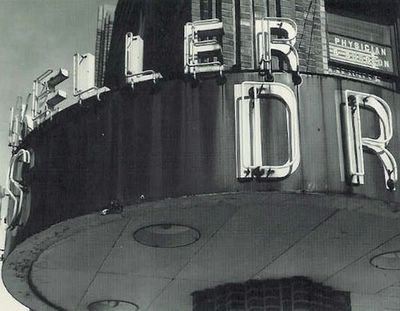
Original Keller Drugs marquee
Photo by Ken Konchel
In a previous post, helpful commentators filled in the missing info on the Hardt Building, and I finally found the photo of the old sign. It’s from the postcard version of a print by my absolute favorite architectural photographer under the age of 90 (Julius Shulman being my favorite, and he’s about 93), Ken Konchel.
Big bear hugs to Mr. Konchel for gladly allowing me permission to run his photo.
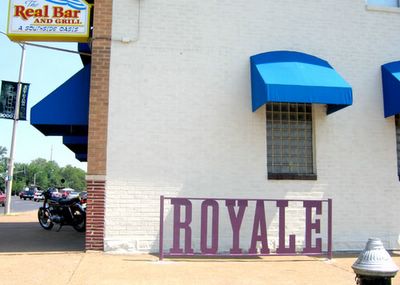
The Royale
South Kingshighway @ Juniata, St. Louis, MO
They installed the coolest bike rack!!!
It’s advertising and public art for the new tavern, and convenient for imbibing urban bikers. All this without being forced to do so by laws we don’t have. Well played, and much appreciated.
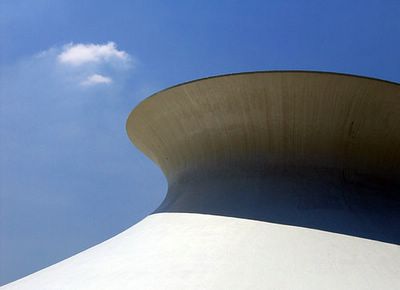
James S. McDonnell Planetarium
Forest Park, St. Louis, MO
It’s the first day of summer, and I’m all aquiver with excitement over Mother Nature’s promise, when the one thing that stopped me dead in my tracks was the man-made Planetarium. It’s such a pure shape, elegant in its simplicity.
To my mind, the STL Modern Troika is the Arch, the Planetarium and Busch Stadium. They represent a 5-year period where St. Louis made assured and cultured statements with its civic architecture. For a brief moment, our city was emboldened by the future, and on this gorgeous summer day, I saw this sight (above), and felt the same.
To Wellston
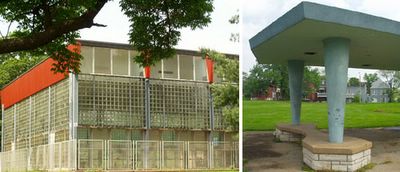
Martin Luther King Dr. & North Kinshighway
St. Louis has racial divide in its DNA, and the history of St. Louis County is also the tale of White Flight. After WW2, the new world of tomorrow sprang up, and the architecture was as modern and adventurous as the future promised to be. On both sides of the city/county line, sleek samples of progress ushered folks into the suburban frontier, and all our inner-ring suburbs – especially on the north side – retain amazing examples of that promise because they were abandoned soon after they were built by Whites leapfrogging over Blacks on their way to deep county. Wellston is a perfect example of progress-to-stagnation Caucasian-Modern architecture.
Start with this excellent site, then motor west on Martin Luther King Dr. from downtown. In the mid-1950s, Sherman Park was given some future polish with googie pavillions for the sports field and the Wohl Community Center moved from across the street and into the park proper. The center still features an indoor pool wing, with sliding glass doors at ground level to let in fresh air, and massive expanses of glass block above that. In person, it’s an overwhelming sight.
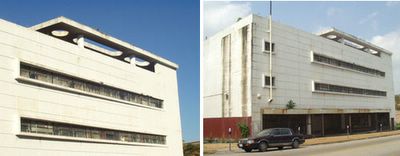
Martin Luther King Dr. between Hamilton & Hodiamont
Right before the county line at Hodiamont is the remains of the JC Penney’s, which closed around 1975. My father was a glazier, and remembers installing mirrors in the building in 1950, and at that time it was still an old-fashioned department store. So, the “Le Corbu” facade was tacked on sometime in the mid-1950s, at the height of the Wellston Shopping District’s popularity.
This building is still space-age triumphant in its decay, and while photographing it in 2003, I talked with a man who claimed to own it. He said the building was still in good condition, with only minor water damage on the top floor, and he’d like to turn it into a black history museum.
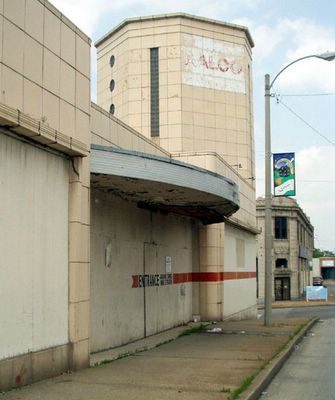
Evergreen & Martin Luther King Dr.
Another case of an old building getting a post-war face lift, in this case a streamlined deco in the late 1940s. This was the first Central Hardware in the county, just a block and a half past the city line. Its last incarnation was as Aalco Plumbing Supply.

Kienlen & Martin Luther King
Right as Skinker becomes Kienlen and city becomes county, banking becomes dramatic.
The advertising tower was there when it was tiny, old-fashioned Sky Bank. In the early 1950s, a brown and black granite facade was added to the (then) Easton side and it became State Bank. Automobiles strangled the street cars, so the glorious turquoise tile drive-thru addition was added in the early 1960s.
I was so smitten with the car-culture aqua-ness of it all, that I didn’t notice the sophisticated geometry of the addition until I shot it in black & white. I adore this building, and it’s at the point where the security guards (it’s now a Regions Bank) ignore me as I document every fine detail of the defunct drive-thru aisles.
And I document this because I know it will all come down. New buildings have been slowly going up around the Wellston Hub, and there is a grand plan. Historic preservation being what it currently is, if any saving gets done, it will be only of buildings retaining any of their pre-WW1 architecture. But this entire district was all about progress and commerce, and the old buildings sporting their mid-century makeovers say more about our former aspirations and dreams than any old wives tales a This Old House rehab would spin. I think it’s important to tell all of the story, and Wellston is a particularly juicy chapter.
